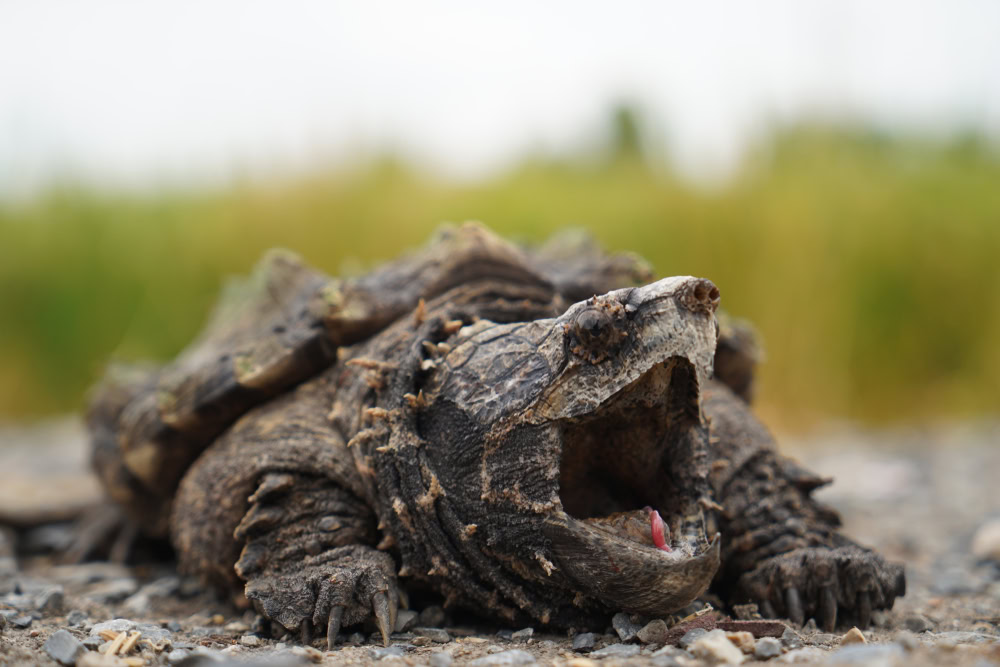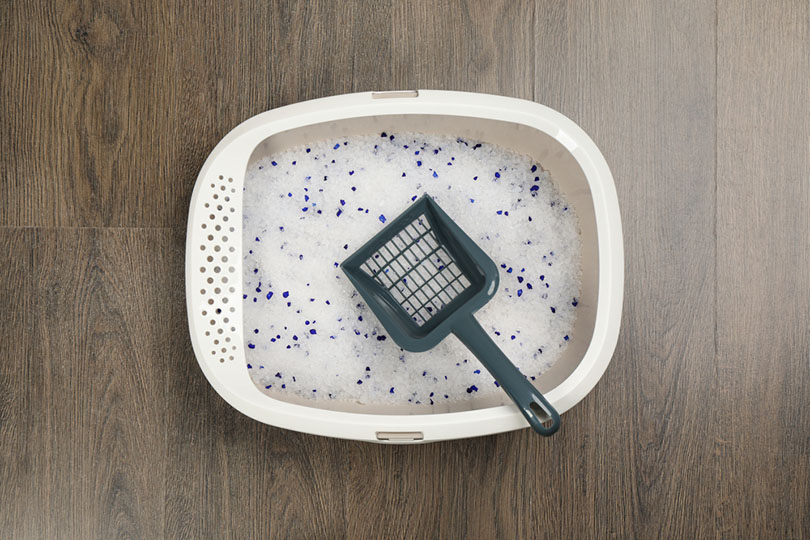VET APPROVED

The information is current and up-to-date in accordance with the latest veterinarian research.
Learn more »Click to Skip Ahead
With their long claws, rock-hard shells, and razor-sharp beaks, snapping turtles look like an imposing force of nature. Every spotting includes a hint of concern, as almost everyone has heard tales of fingers lost to up-close encounters with the business end of an angry snapper. Luckily, snapping turtles aren’t the most dangerous reptiles and typically only bite when there’s no other way to defend themselves.
Understanding the snapping turtle’s potential for damage is essential for anyone needing to interact directly with them. If you need to move one safely off a busy road or other dangerous situation we have some advice to keep you both safe.
Types of Snapping Turtles
Presently, there are five well-known species of snapping turtles, and a sixth proposed species (which is currently being debated by taxonomists). All of these species are distributed among two genera: Chelydra and Macrochelys. The species in the genus Chelydra are smaller than those in the genus Macrochelys.
1. South American Snapping Turtle (Chelydra acutirostris)
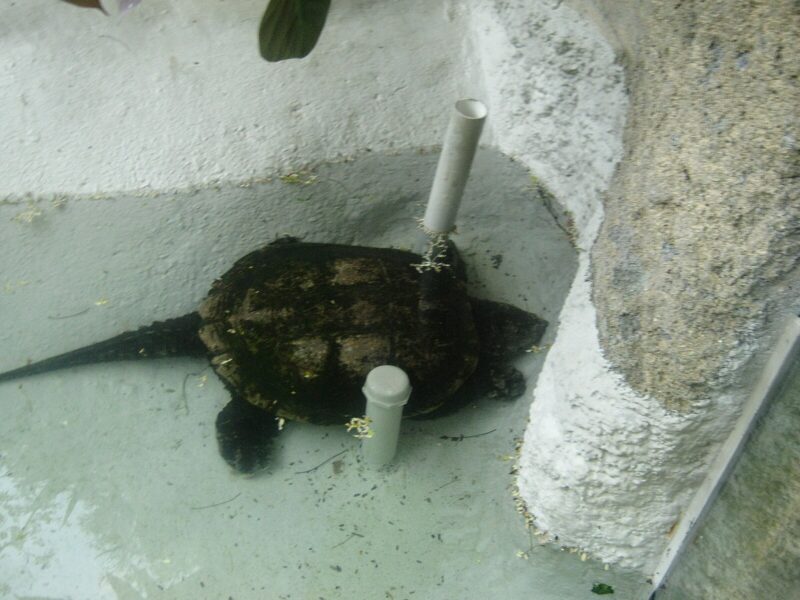
Though previously thought to be a subspecies of the Common Snapping Turtle (which we’ll mention shortly), recent taxonomic analyses have led to these turtles being classified as their own species. This species is endemic to the central and northwestern parts of South America and can be found in Honduras, Nicaragua, Costa Rica, Ecuador, Peru, Panama, and Colombia.
2. Central American Snapping Turtle (Chelydra rossignonii)
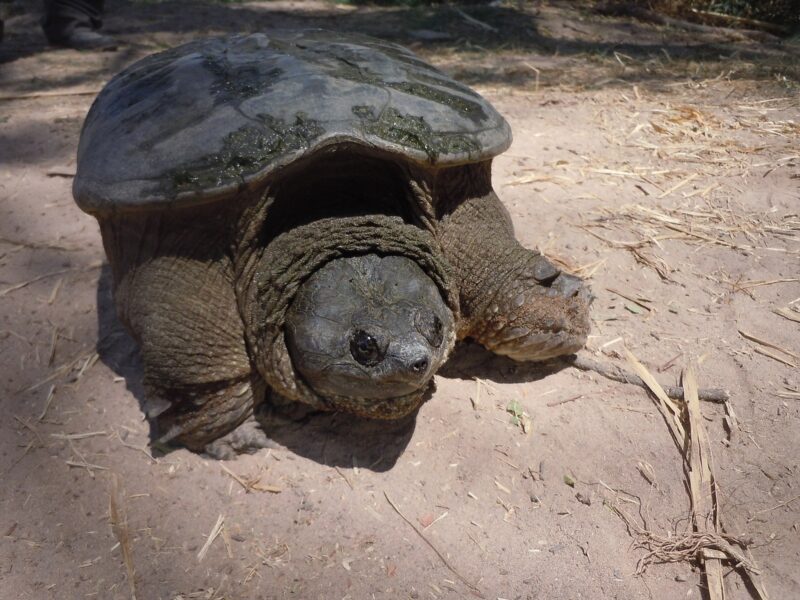
Also known as the Yucatán or Mexican snapping turtle, this species is endemic to South America as well. Their natural habitats are slow-moving freshwater rivers, swamps, tributaries, and the wetlands of Belize, Guatemala, Honduras, and Mexico. Interestingly, they’ve been noticed in nature with algae on their shells, which these turtles seem to use as camouflage.
This species is currently listed as vulnerable by the IUCN, due to their continuing decline in their natural habitats. 1
3. Common snapping turtle (Chelydra serpentina)
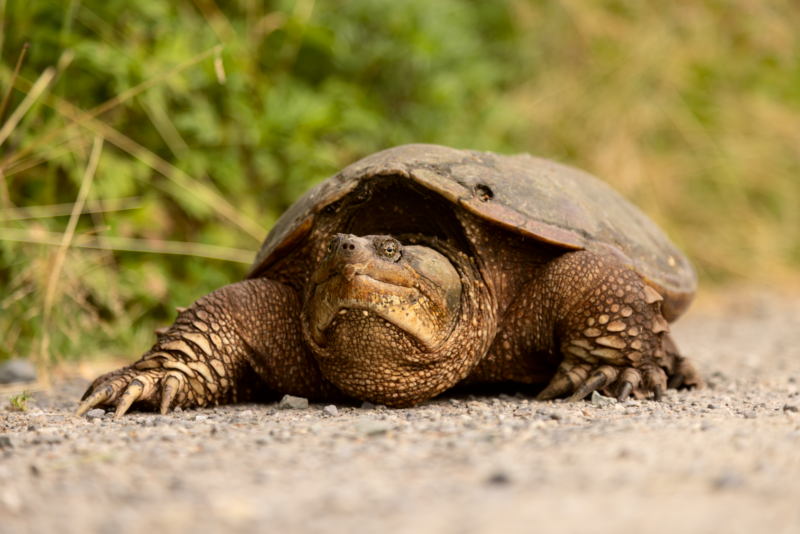
Perhaps the best-known snapping turtle is the aptly named common snapping turtle. Found almost everywhere in North America, this species is best known for its combative tendencies if approached when out of water. However, it seems this disposition is defensive in nature; if these turtles feel threatened while near water, their instinct is to dive down and seek cover rather than confront their perceived threat.
4. Suwannee Alligator Snapping Turtle (Macrochelys suwanniensis)
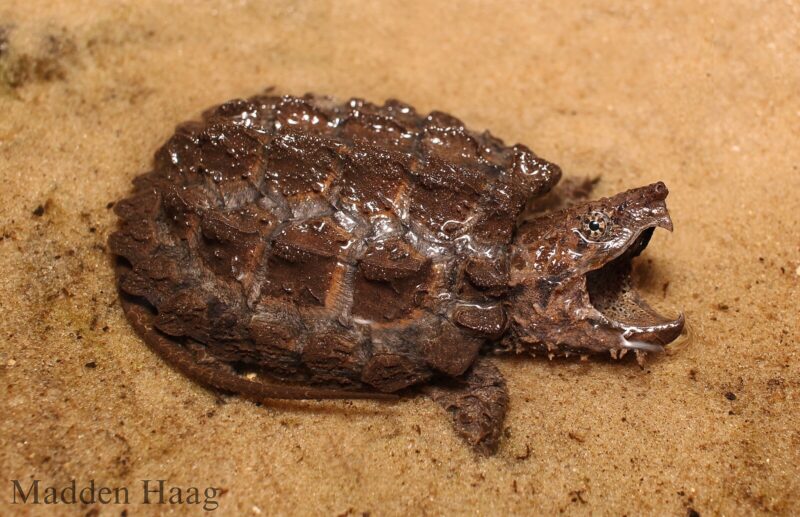
Found exclusively in and along the Suwannee River basin in the US, this species is unfortunately facing endangerment due to their slow reproductive rate, which cannot keep up with factors such as illegal hunting, injuries from fishing hooks, and habitat loss. As a result, this species has gained protection as a threatened species under the Endangered Species Act as of July 29, 2024.
5. Alligator Snapping Turtle (Macrochelys temminckii)
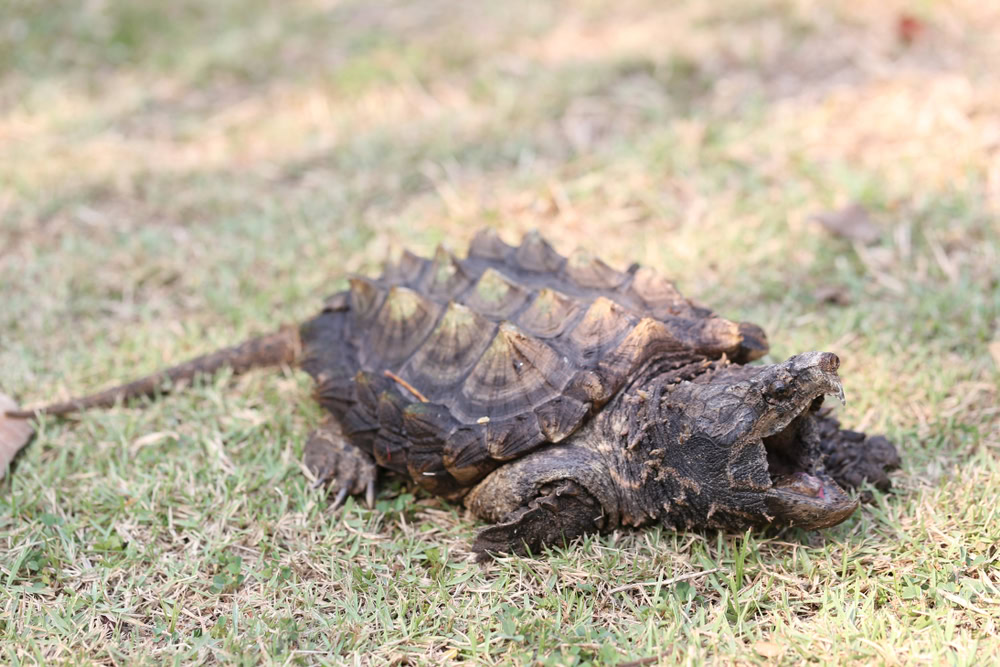
One of the heaviest freshwater turtle species anywhere in the world, and the largest freshwater turtle species in the US, the alligator snapping turtle is endemic to all bodies of freshwater within the US.
This species gets its name from their immensely powerful jaws and distinct ridges on their shells, which are described as similar to the rough, ridged skin of an alligator. This species is also listed as vulnerable in terms of their conservation status.2
6. Proposed Species – Apalachicola Snapping Turtle (Macrochelys apalachicolae)
There is a current proposal to recognize the alligator snapping turtles found along the Apalachicola River in the United States as their own species. However, this proposal has still not been approved by taxonomic authorities, as some organizations have claimed this proposal as unnecessary.

Are Snapping Turtles Dangerous?
Snapping turtles are rarely aggressive toward humans. In the wild, they won’t approach or attack but try to escape to avoid harm. When swimming in the lakes and streams they inhabit, they’ll evade human swimmers and boaters, either moving away or retreating to the bed far below the water’s surface.
On land, it’s a different story. When walking around and exposed, snapping turtles may resort to aggression. Nesting females can be particularly disagreeable. They won’t chase you, but their inability to outrun predators or tuck their heads into their shells gives them only one option when they sense a threat. Recognizing their neck’s flexibility and the fast-snapping jaws is vital for safe handling.
How Strong Is a Snapping Turtle’s Bite?
The snapping turtle’s body and head size are the best predictors of their bite force. Their power can vary widely from one turtle to the next, with one study finding that the largest Alligator snapping turtles have bite forces of up to 1,872 Newtons. Common snapping turtles had a much lower bite force that maxes out at 564 N. For comparison, humans bite with a force of roughly 1,100 N when using our second molars.
Pet snappers may anecdotally have a reduced power but should still be handled cautiously. Wild Alligator snapping turtles have shown a higher bite force than those in captivity, while captive pond dwellers tend to use more force than turtles that live indoors. Snapping turtles in the wild will also bite with less provocation than their pet counterparts.
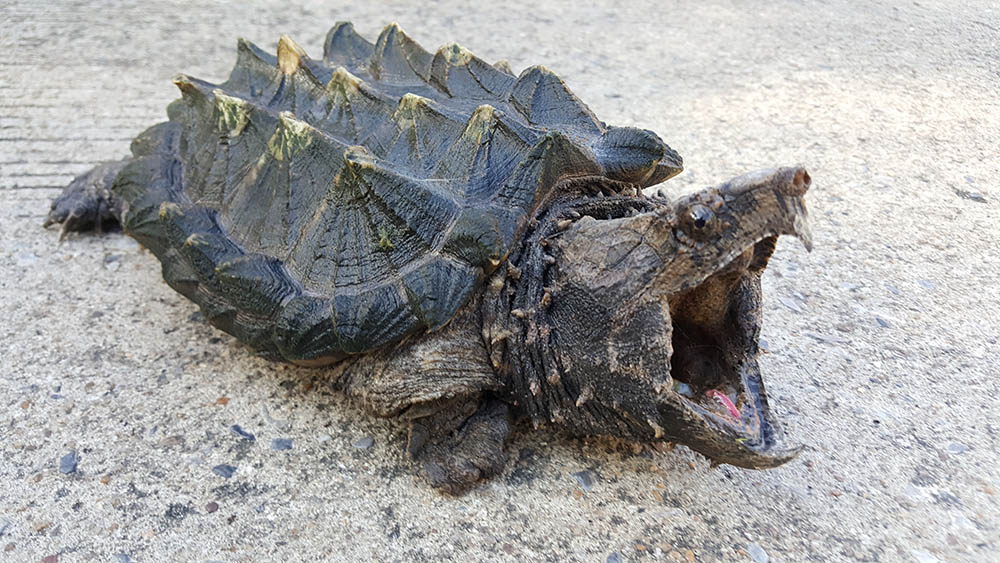
How to Safely Carry a Snapping Turtle
Occasionally, you may have to move a snapping turtle, like when a turtle in human care escapes their enclosure or a wild one wanders onto a busy road. Since snapping turtles have long necks that can crane around about half their body length, grabbing them from the sides or front can result in a bite to the finger.
To Carry a Turtle From the Genus Chelydra
Take hold of the turtle at the back of the carapace (top shell) with both hands in between the hind legs, while avoiding the tail. Gently lift them if they’re small enough to carry. If they are too heavy you may need to get some assistance and equipment. Putting them on a thick mat, piece of cardboard, or towel you can carefully pull them along the ground if necessary. Ensure that there is enough padding to make sure they are not injured in the process. It is better to enlist the help of others and once on the towel or blanket to lift them this way. It may also be possible to lift them into a wheelbarrow to get them where they need to go.
You may have seen or heard of people getting them to bite on a stick and then using that to pull them across the road. This is not recommended as it is not safe and can result in injuries to the turtle.
A smaller individual can be carried with one hand, if needed. However do note that unless absolutely necessary, we do not encourage approaching or carrying these animals.
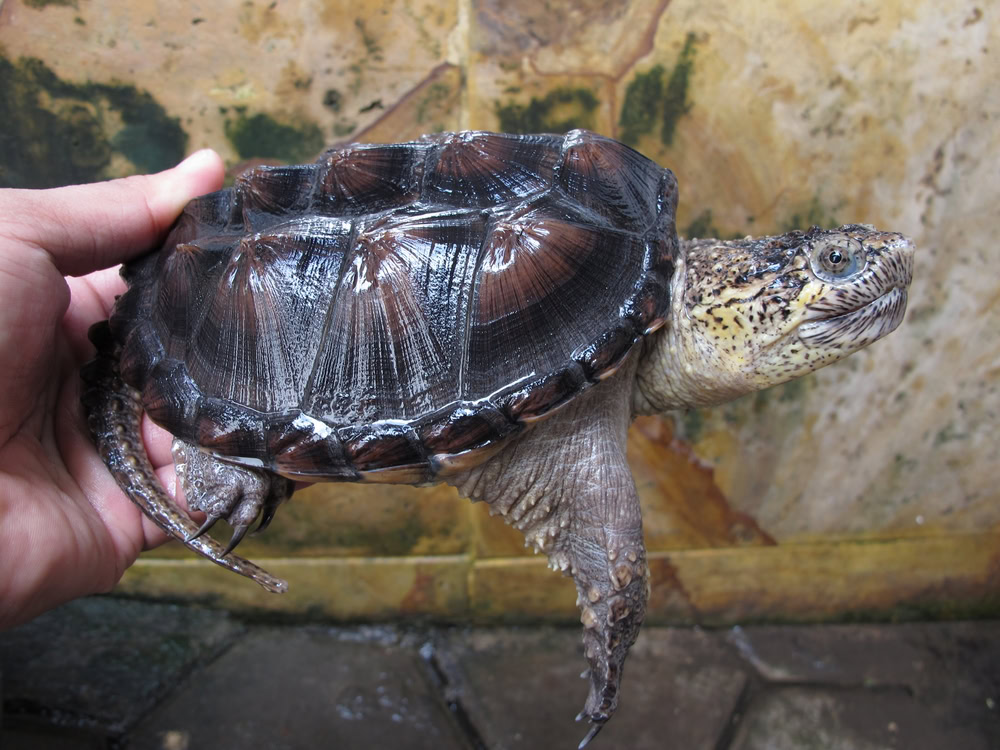
To Carry a Turtle From the Genus Macrochelys
These turtles are much heavier and larger than their Chelydra counterparts. Providing relative safety, a smaller turtle should be carried by being held at the sides of their shells. A larger turtle, with their proportionately longer neck and greater reach, should be carried by holding them at the base of the neck or the base of the tail (or both).
Again, we must reiterate that this task is best left to trained professionals; we do not advise approaching or carrying any snapping turtle through your own volition, as it may result in injuries for both you and the turtle.
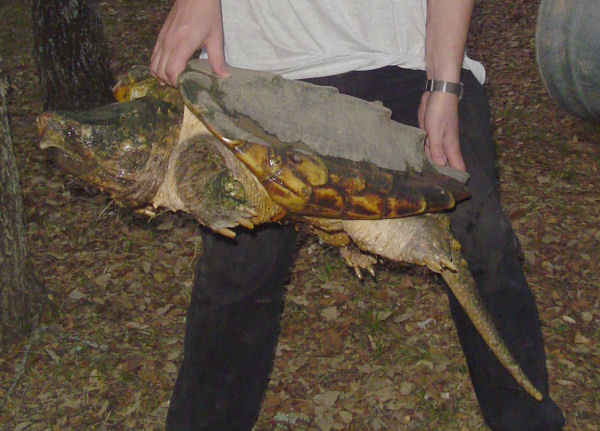
Can Snapping Turtles be Pets?
It can be exciting to see a snapping turtle when you are out for a nature walk and hatchlings are adorable. It is not recommended to keep snapping turtles as pets and they should not be removed from their natural habitat. In many states, it is illegal to own a snapping turtle. Another point to consider is that many snapping turtle numbers are declining and they are considered as a vulnerable species by IUCN.
Final Thoughts
Snapping turtles have the tools to defend themselves, but they’re no more dangerous than most wild animals. They like peace and comfort whenever possible, and if you treat them respectfully, they’ll have no reason to lash out. While appropriate handling is critical to avoid injury if you must engage them, handling them as little as possible is ideal.
Featured Image Credit: Sista Vongjintanaruks, Shutterstock
